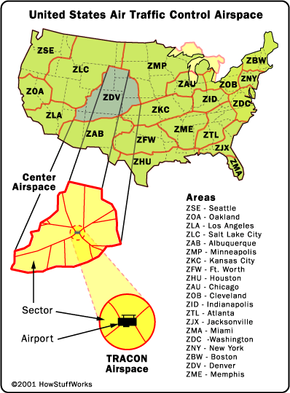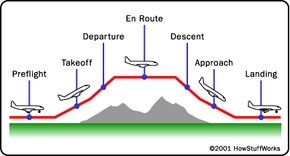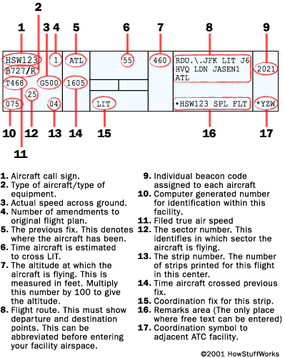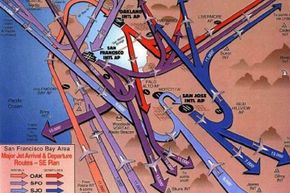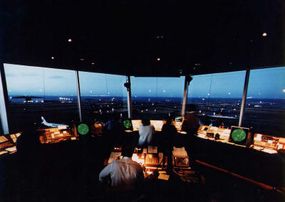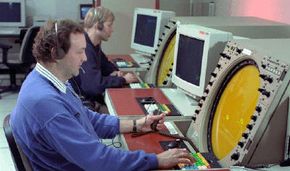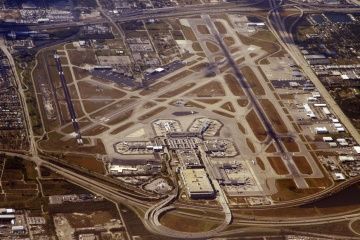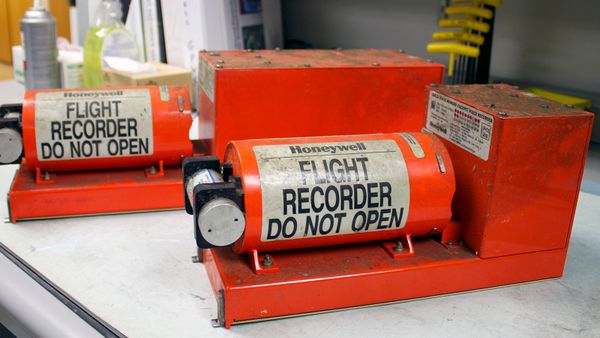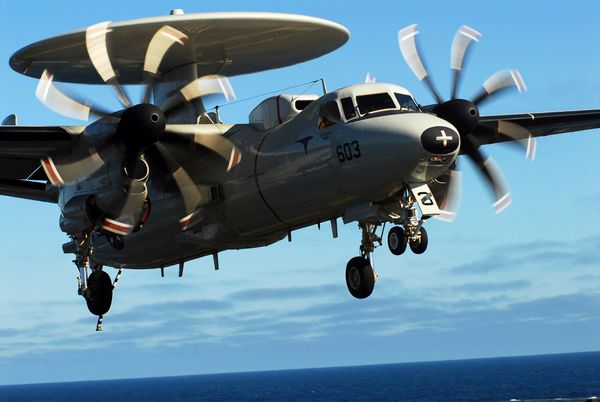During peak air travel times in the United States, there are about 5,000 airplanes in the sky every hour. This translates to approximately 50,000 aircraft operating in our skies each day. How do these aircraft keep from colliding with each other? How does air traffic move into and out of an airport or across the country?
The task of ensuring safe operations of commercial and private aircraft falls on air traffic controllers. They must coordinate the movements of thousands of aircraft, keep them at safe distances from each other, direct them during takeoff and landing from airports, direct them around bad weather and ensure that traffic flows smoothly with minimal delays.
Advertisement
When you think about air traffic control, the image of men and women in the tower of an airport probably comes to mind. However, the air traffic control system is much more complex than that. In this article, we will examine air traffic control in the United States. We'll follow a flight from departure to arrival, looking at the various controllers involved, what each one does, the equipment they use and how they are trained.
Airspace and Air Traffic Control
The United States airspace is divided into 21 zones (centers), and each zone is divided into sectors. Also within each zone are portions of airspace, about 50 miles (80.5 km) in diameter, called TRACON (Terminal Radar Approach CONtrol) airspaces. Within each TRACON airspace are a number of airports, each of which has its own airspace with a 5-mile (8-km) radius.
The air traffic control system, which is run by the Federal Aviation Administration (FAA), has been designed around these airspace divisions. The air traffic control system divisions are:
- Air Traffic Control System Command Center (ATCSCC) - The ATCSCC oversees all air traffic control. It also manages air traffic control within centers where there are problems (bad weather, traffic overloads, inoperative runways).
- Air route traffic control centers (ARTCC) - There is one ARTCC for each center. Each ARTCC manages traffic within all sectors of its center except for TRACON airspace and local-airport airspace.
- Terminal radar approach control - TRACON handles departing and approaching aircraft within its space.
- Air traffic control tower (ATCT) - An ATCT is located at every airport that has regularly scheduled flights. Towers handle all takeoff, landing, and ground traffic.
- Flight service station (FSS) - The FSS provides information (weather, route, terrain, flight plan) for private pilots flying into and out of small airports and rural areas. It assists pilots in emergencies and coordinates search-and-rescue operations for missing or overdue aircraft.
The movement of aircraft through the various airspace divisions is much like players moving through a "zone" defense that a basketball or football team might use. As an aircraft travels through a given airspace division, it is monitored by the one or more air traffic controllers responsible for that division. The controllers monitor this plane and give instructions to the pilot. As the plane leaves that airspace division and enters another, the air traffic controller passes it off to the controllers responsible for the new airspace division.
Some pilots of small aircraft fly by vision only (visual flight rules, or VFR). These pilots are not required by the FAA to file flight plans and, except for FSS and local towers, are not serviced by the mainstream air traffic control system. Pilots of large commercial flights use instruments to fly (instrument flight rules, or IFR), so they can fly in all sorts of weather. They must file flight plans and are serviced by the mainstream air traffic control system
Up next, we'll check in with a commercial airline flight before it takes off.
Advertisement
